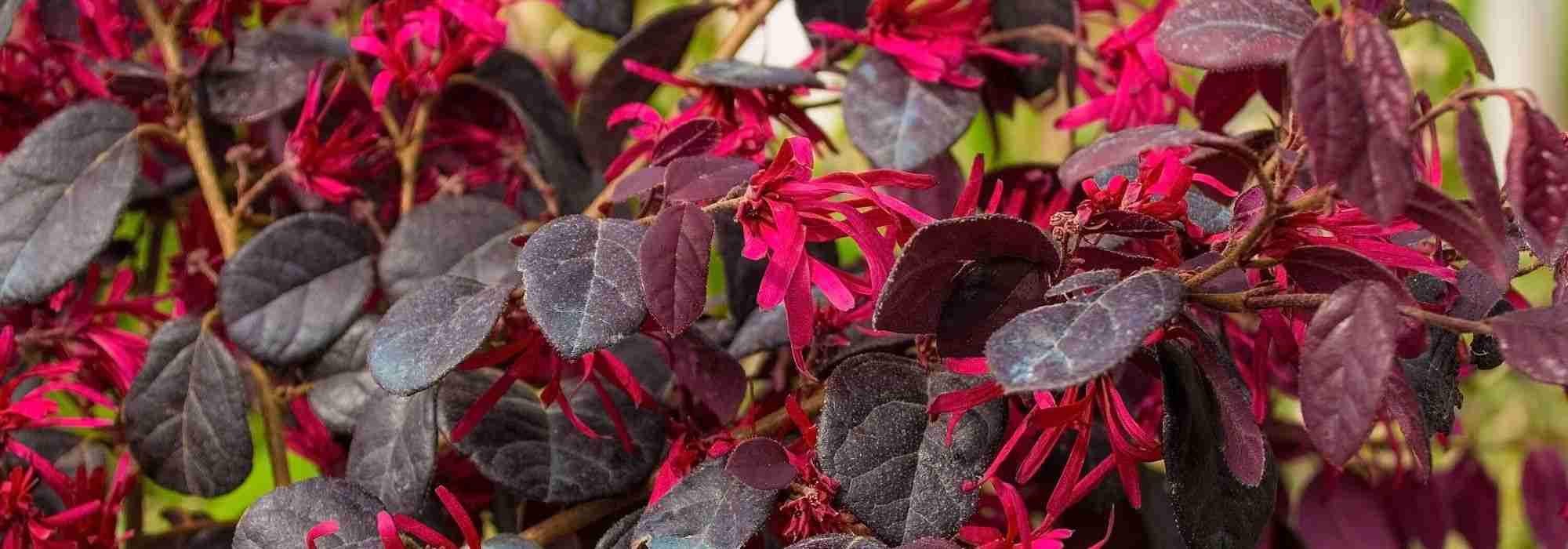
Red flowers: 8 shrubs you must have in your garden
Our selection
Contents
Flamboyant, dazzling, red-flowering shrubs are incomparable for adding colour and vitality to a garden. Red excites and draws the eye. It is a rich, bold shade that stands out beautifully against green foliage. Gardeners often shy away from it. Yet they’d be missing out! Red allows for fascinating, striking combinations and powerful plays of colour and contrast, especially when mixed with black. Evergreen or deciduous, in hedges or borders, these bushes are always remarkable for the warmth they exude. Here is our selection of the most beautiful red-flowering shrubs!
Azalea 'Koster's Brilliant Red'
This large Chinese azalea, Azalea ‘Koster’s Brilliant Red’, treats us to an incredible, flamboyant flowering in spring. In May, bright green foliage is covered with a profusion of scented vermilion flowers. Unlike Japanese azaleas, this very handsome, large-stature bush is deciduous and hardy. It thrives in sun or partial shade, in a border of heather soil, cool but well-drained. It will be magnificent in association with Japanese camellias and other Chinese azaleas in fiery tones (‘Peter Koster’, ‘Lingot d’Or’, ‘Fire ball’).
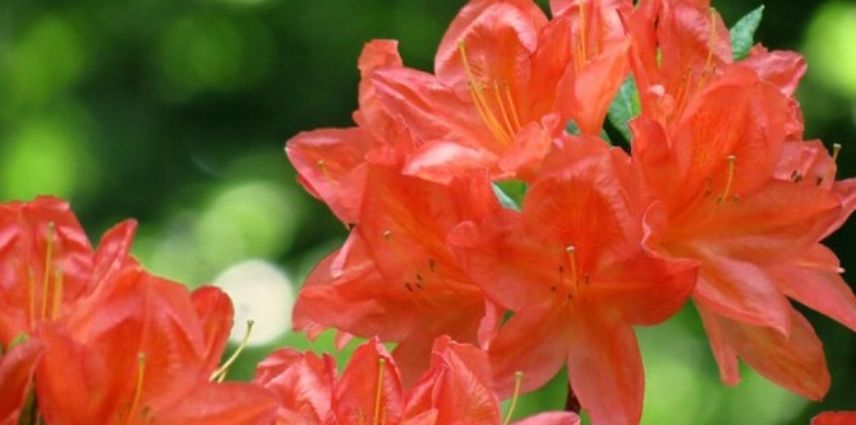
Discover other Red flowering shrubs
View all →Available in 1 sizes
Available in 0 sizes
Available in 1 sizes
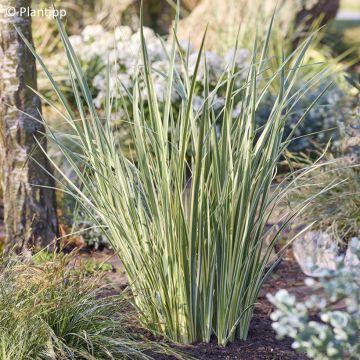
Available in 1 sizes
Available in 1 sizes
Available in 1 sizes
Available in 1 sizes
Available in 2 sizes
Available in 1 sizes
Available in 1 sizes
Callistemon or bottlebrush
Callistemon is a small bush prized for its original summer flowering, shaped like colourful bottlebrushes which earned it the nickname “bottlebrush”. These feathery flower spikes are most often bright red, as in the Callistemon rigidus with its magnificent bottlebrushes red dusted with golden-yellow pollen and the Callistemon (x) laevis with bottlebrushes of an almost fluorescent red on light-green foliage. Frost-tender, cultivation in garden should be reserved for mild, oceanic or Mediterranean climates. Elsewhere, it adapts perfectly to pot culture and can be overwintered under cover. It grows in sun in any non-calcareous, fairly fertile and well-drained soil. With its original, slightly lanky silhouette, it is used as specimen, in centre of a mixed bed, or in a loose hedge, combined with Grevillea, Leptospermum, Melaleuca or a shrubby Ceanothus.
For everything about this attractive bush, discover our complete dossier “Callistemon, Bottlebrush: planting, pruning, maintenance”
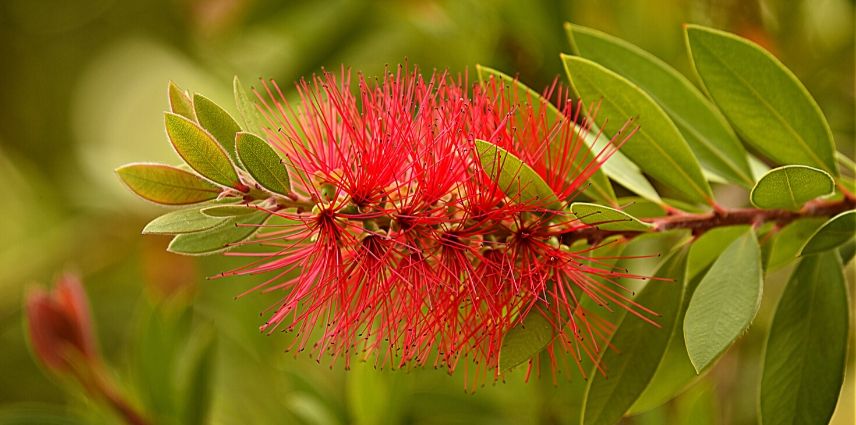
Camellia
Valued for its abundant flowering and glossy, evergreen dark green foliage, camellia is a dazzling bush that flowers in autumn, winter or spring, depending on variety. Among the many varieties and cultivars, with single, semi-double or double flowers, some camellias display brilliant red flowering. For example, Camellia ‘Royal Velvet’, a variety with large single carmine-red flowers, and Camellia ‘Holly Bright’, a Japanese camellia variety with large, semi-double, bright salmon-red flowers, beautifully ruffled, both of which bloom from February to April and form, at ripeness, a bush 1.20 m high by 70 cm wide.
Camellia ‘Lipstick’ is an original and rare Japanese camellia variety that blooms from January to March and produces very unusual flowers, red variegated with white, reminiscent of anemones. All prefer mild, humid climates, favour shade or semi-shade and a soil rich in humus and slightly acidic. They cannot tolerate lime above all. These camellias can be grown in a pretty pot on a terrace or balcony and overwintered in cold climates, or planted in a heather soil bed alongside Rhododendrons, Azaleas or Kalmia Latifolia.
And to learn all about their cultivation, also see our advice sheet Camellias, these plants that bloom in winter.
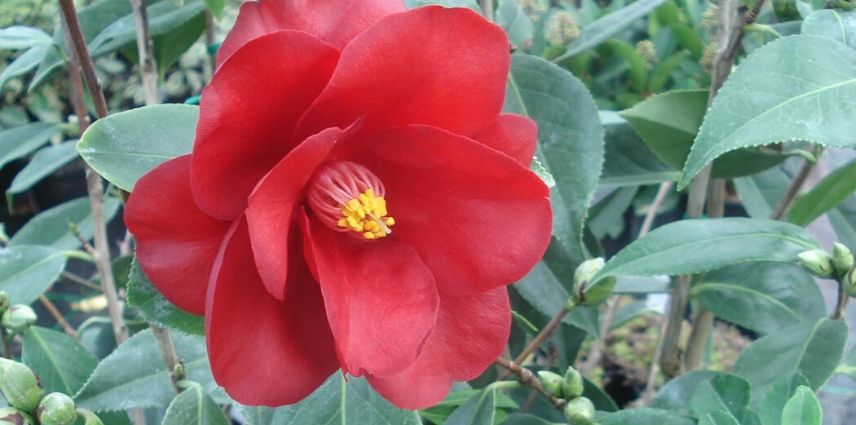
Japanese quince
Japanese quince or Chaenomeles is a very handsome bush notable for its early flowering, in late winter, from February on branches still naked. Its delicate, waxy flowers are available in an infinite variety of colours including scarlet reds such as ‘Hot Fire’. The Japanese quince ‘Scarlet Storm’ also displays, all along its branches, very large double camellia-like flowers, of a deep, dark red. ‘Rubra’ is a splendid form with dark red flowers.
Perfectly hardy (–25°C), it is comfortable in all our climates and grows in ordinary, not too calcareous soil that is well-drained and stays cool. Its twisted, naked, thorny branches, studded with flowers, are prized in Japanese Ikebana compositions. Japanese quince finds its place in all natural gardens, even small spaces, forming pretty focal points and always bringing a very graphic contemporary touch. They can be grown both as specimens and in mass plantings and placed in a hedge, together with yellow or white Forsythias (Abeliophyllum distichum), Lilacs, Japanese kerria which will follow its flowering.
To learn all about this superb bush, discover our plant sheet “Japanese quince: planting, pruning and maintaining”
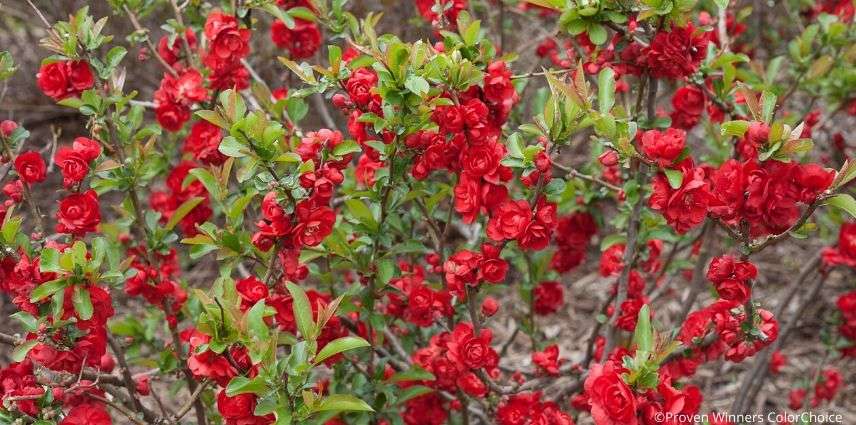
Calycanthus floridus
Calycanthus floridus or “Anemone tree” will bring a touch of originality to your garden! Here is an astonishing bush with its reddish-brown flowers, resembling small water-lilies or magnolias that open throughout summer, diffusing a light strawberry scent while its leaves give off a camphor-like aroma when crushed. Whether planted on its own, as a flowering hedge, in a mixed border or in a pot on the terrace, this bush, very hardy down to -20°C, will reveal its character throughout the season. Its preference for slightly acidic conditions means it appreciates the company of bushes that thrive in heather soil such as Andromedas, Magnolias or shrub peonies.
To learn all about this beautiful bush, discover our complete guide: “Calycanthus or Anemone tree: plant, prune and care for”
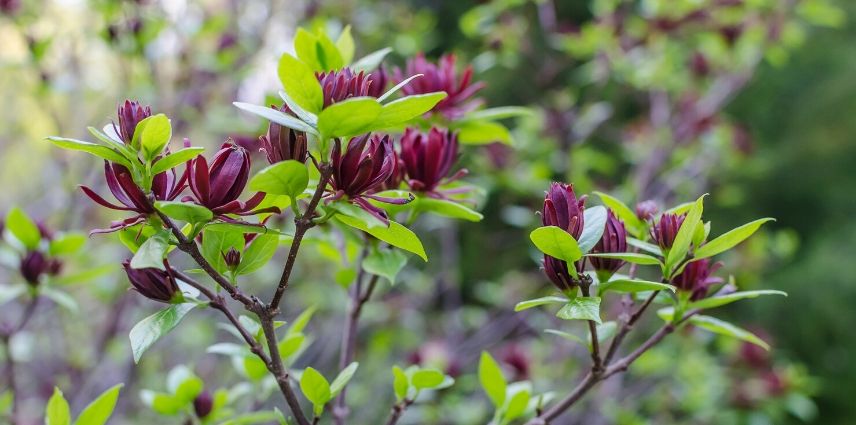
Crinodendron hookerianum
Crinodendron hookerianum is an evergreen bush, hardy down to -8°C, flowering from May to September, with curious pendulous cherry-red flowers shaped like small lanterns, which earned it the common name lantern tree (flowering only begins on specimens at least 5 years old). In gardens it will not exceed 4 m in height with a 3 m spread and can be grown in a pot throughout France, on the terrace in the warmer months, moved to a frost-free place in winter or planted at the back of a border. To thrive, it needs a position sheltered from cold winds and strong sun; plant in partial shade, in soil rich in humus, acidic and moist. It will thrive in cool spots alongside small bushes such as the Fuchsia ‘Lady Boothby’.
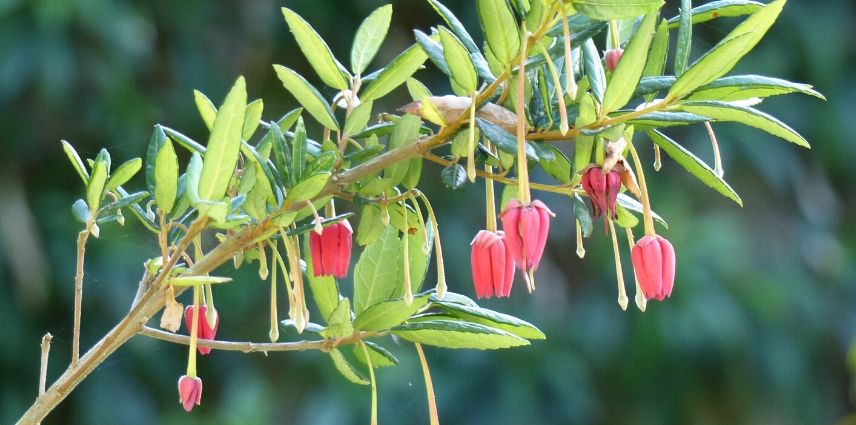
Escallonia 'Red Carpet'
Well known to Breton and English gardeners, Escallonia is a handsome evergreen bush tolerant of sea spray, ideal by the coast where it serves as centrepiece of hedges. This cultivar ‘Red Carpet’, smaller than the species type, is a groundcover bush better suited to being grown in mixed borders or in containers. Set against fragrant, glossy and leathery foliage that usually persists through winter, from June until September small waxy trumpets of a beautiful ruby red stand out. Tender, it is an excellent garden plant for mild climates. It thrives in ordinary, well-drained soil in full sun and sheltered from cold winds. In a colourful mixed border, it will be perfect companion to Gauras, Cistus or Phlox.
To learn everything about this handsome bush and how to grow it in the garden, discover our complete guide: “Escallonia: planting, pruning and maintenance”.
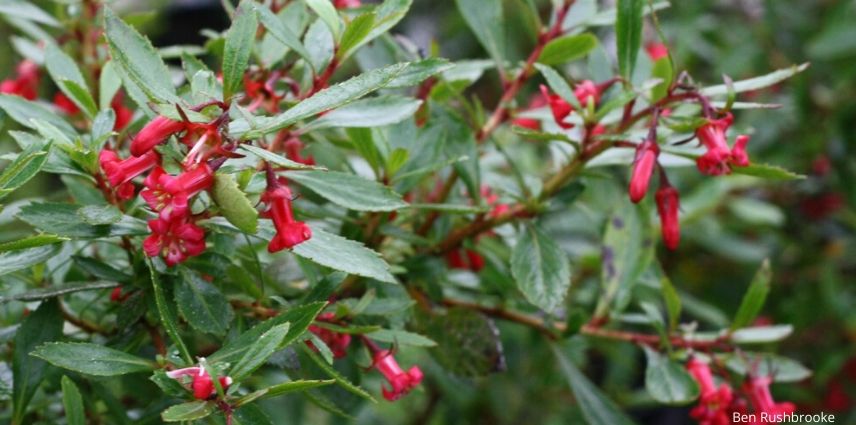
Loropetalum chinense 'Ever Red®'
Loropetalum chinense Ever Red® ‘Chang Nian Hong’ is a small ornamental bush, clad in beautiful evergreen dark purple, almost black foliage throughout the year. From March to May, it is adorned with small, slightly twisted ribbon-like flowers of incandescent red colour that form a sumptuous contrast with the dark foliage. With a compact, slightly spreading habit, it will be marvellous in a container (especially in cold regions as it is tender to −10 °C) or planted in the ground in an informal hedge, or within a shrub border on heather soil with camellias or deciduous azaleas with which it forms sublime combinations because it prefers soils free of lime.
Discover the guide dedicated to it: “Loropetalum: planting, pruning and maintaining”
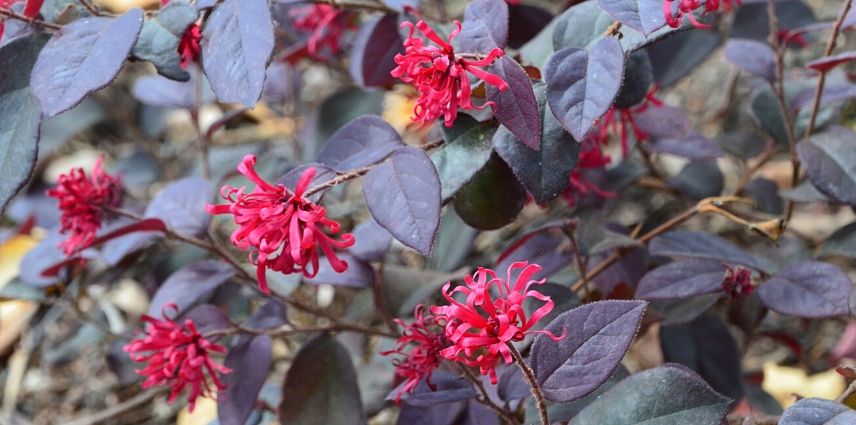
- Subscribe!
- Contents
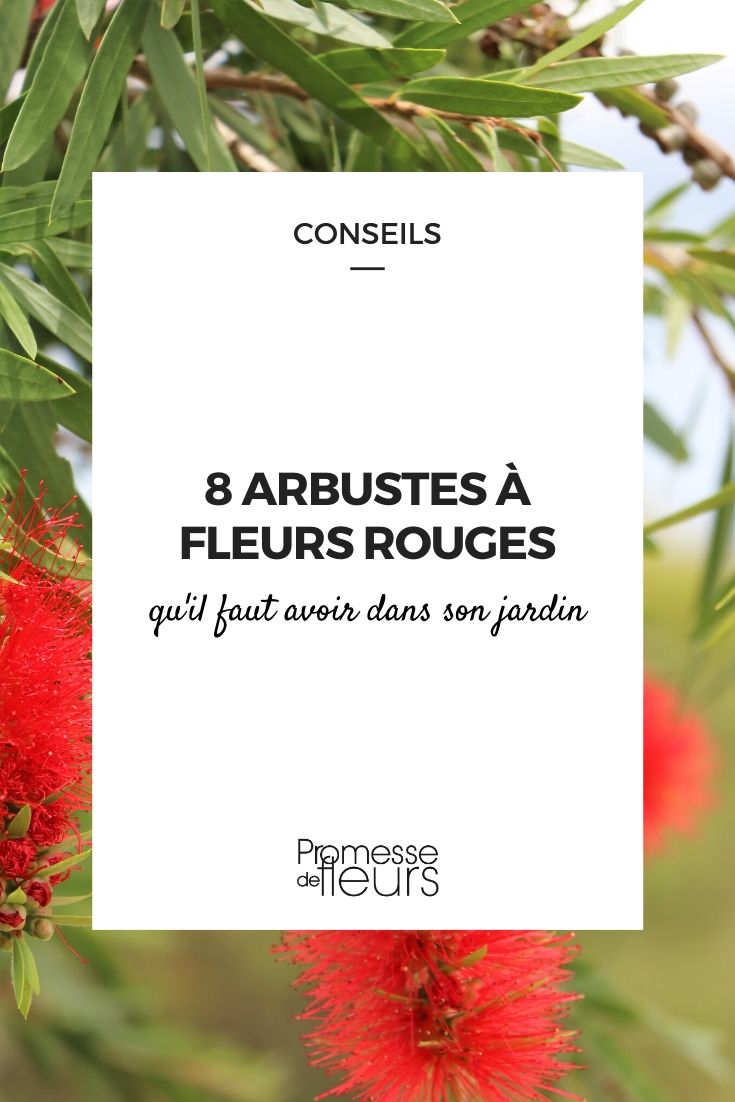

































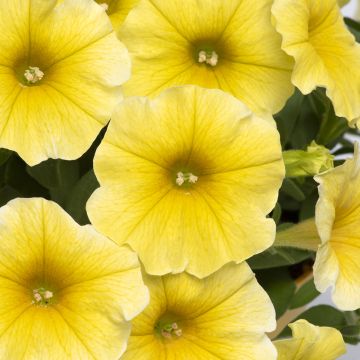
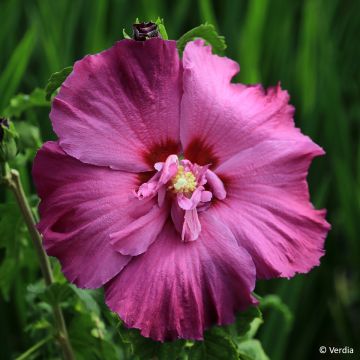
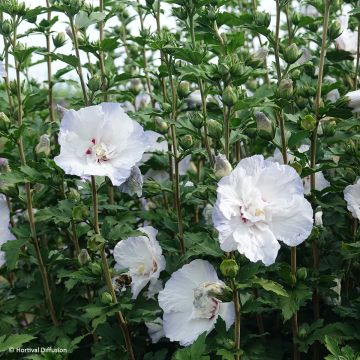


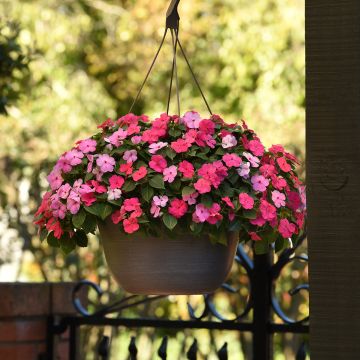
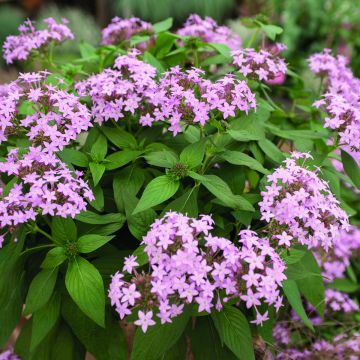
Comments